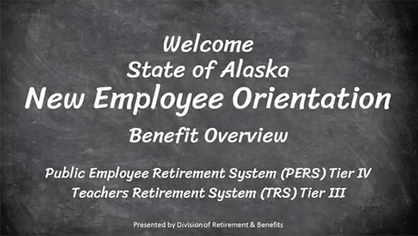 JULY 2017 | VOLUME 143

While conducting PERS and TRS compliance audits,
Division of Retirement and Benefit auditors also look to ensure that employers
are in compliance with Social Security withholding guidance.
One of the common mistakes DRB auditors see while
conducting field audits is employers reporting board members’ or volunteers’
stipends on Federal Form 1099-Misc. Instead, these individuals should be included
as employees on payroll and their income should be reported on Federal Form W2.
Issuing these individuals a Federal Form W2 indicates
that they are an employee; issuing them a Federal Form 1099-Misc indicates that
they are an independent contractor.
In general, the determination of worker status is made
by applying established common-law standard that addresses the facts and
circumstances concerning how the work is performed.
Internal Revenue Code Section 3121(d)(2) states that,
for purposes of Social Security and Medicare, an employee is “any individual
who, under the usual common-law rules applicable in determining the
employer-employee relationship, has the status of an employee.”
All facts in circumstances must be considered in
deciding whether a worker is an independent contractor or any employee. The
facts fall into three main categories:
- Whether
the entity has the right to control the behavior of the worker;
- Whether
the entity has financial control over the worker; and
- The
relationship of the parities, including how they see their relationship.
For more information
on determining worker status, please see IRS Publication 963. As
always, please don’t hesitate to call the office of the State Social Security
Administrator at (907) 465-5707 with any questions you may have.
On-behalf funding for PERS and TRS employers
for Fiscal Year 2018 (FY18) is provided by House Bill (HB) 57 (Section 41). HB 57
passed during the 2017 legislative session and was recently signed into law.
The bill provides a set amount of funding to reduce the PERS Employer Effective
Rate to 22 percent and the TRS Employer Effective Rate to 12.56 percent for FY18.
This funding is applied with the processing of
each employer payroll. Employer on-behalf funding statements will be sent via
email to payroll and finance contacts. For PERS on-behalf funding questions or
statement copies please email Tamara Criddle at tamara.criddle@alaska.gov or call (907) 465-2279. For TRS
on-behalf funding questions or statement copies please email Walter Agne
at walter.agne@alaska.gov or call (907) 465-5711.
For PERS and TRS employer on-behalf funding
provided in HB 57, the Division of Retirement and Benefits will apply payments
for payrolls through pay period end date June 30, 2018. Fiscal year 2018 (July
1, 2017 to June 30, 2018) payrolls must be received in our office by July 15,
2018, to be processed with HB 57 employer on-behalf funding.
For other questions, please contact:
Christina Maiquis
(907) 465-1845
christina.maiquis@alaska.gov

Do you have an employee new to the Alaska Public Employees' Retirement System? The
Division's new PERS New Employee Orientation video
provides an overview of the benefits available to them, including
Defined Contribution Retirement plan, Group Life insurance, Voluntary
Supplemental Benefits, SBS-AP, and Deferred Compensation.
|